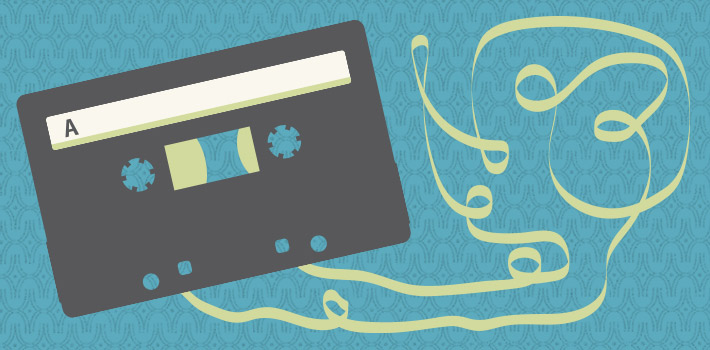“The making of a great compilation tape, like breaking up, is hard to do and takes ages longer than it might seem.”
– Rob Gordon, High Fidelity
My amendment to the above quote would be this… “The making of a great mixtape, like branding, is hard to do and takes ages longer than it might seem.”
My father taught me about mixtapes and their importance. I’d watch him sit cross-legged on the floor with a notepad and write down the times of every song that he was considering as a viable option for his compilation. At the time, and maybe even now, I thought he was crazy. However, I joined the club and that’s how I operate.
He explained to me that there is a limited amount of space and a limited amount of time for you to communicate what it is that you want to communicate. My father looked at me and stated, “you better effin get it right.”
Mixtapes. One word. Mixtapes are one of my top 5 favorite things… yes, the vessel of a CD can count as a mixtape, but for this conversation I’m referring to cassettes. They have taught me so many things that I apply on a daily basis as I work with our clients to understand and further their brands. Mixtapes have taught me discipline, brevity, audience appreciation, the importance of naming, how to make badass cover artwork, and also about making a statement.
Anyone can make a playlist. All you have to do is digitally drag a bunch of songs into a folder, maybe name it, and press play (a caveat: there is a time and a place for playlist making). My point is that it doesn’t necessarily require any skill to create a playlist. It doesn’t even take that much time. If you don’t like the song playing, you hit next and it is gone… kind of like what can happen when brand interaction on social media goes wrong. When you make a playlist, it’s without a lot of thought. You’re making something quick—that kind of does what you want it to do. That should never be your (or your brand’s) intent. Instead, you want your brand to be a mixtape, something that was considered and something that will be considered.
(Sidenote: if you don’t like songs on the mixtape, that is on you, the creator. You didn’t put the best version out into the world. Hint: that is why you have to road test your mixes before you release it. For me, that was the original QA.)
Sometimes, we make playlists for the office because it’s convenient and in the background and no one has to really pay attention, which is fine… for a playlist, not a brand. It’s key that brands take the mixtape approach:
The mixtape approach:
– Think about what it is you want to communicate, what’s your point?
– Write it down a few times… is your intention clear?
– Who are you making the mix for? Who is your audience?
– If the mix isn’t for you… find out what the audience likes. Don’t assume!
– Consider where the audience will listen to the mix, does that change anything?
– If it’s quality, people will like it, share it, and become a fan (see what I did there?)
– Be clear with your message, but don’t be repetitive, creepy, or come on too strong
– Don’t panic! It’s your mix, and you’ll put your unique spin on it
– If you are not a mixtaper and don’t have one in-house, call us (or someone like us)
I still make mixtapes (in CD form… due to the fact that my car doesn’t have a cassette player anymore). I do this because I love music and I love making CDs for my friends and family, but I also think that making mixes is good practice for making something intentional. As my friend/collaborator/fellow-mixtape-creator Troy Monroe says, a mixtape forces you to make a product (and the experience around that product) much more intentional and reflective. How much is enough, when do you need more?
Look, I might sound like an old fogy, but it’s the effin truth.
